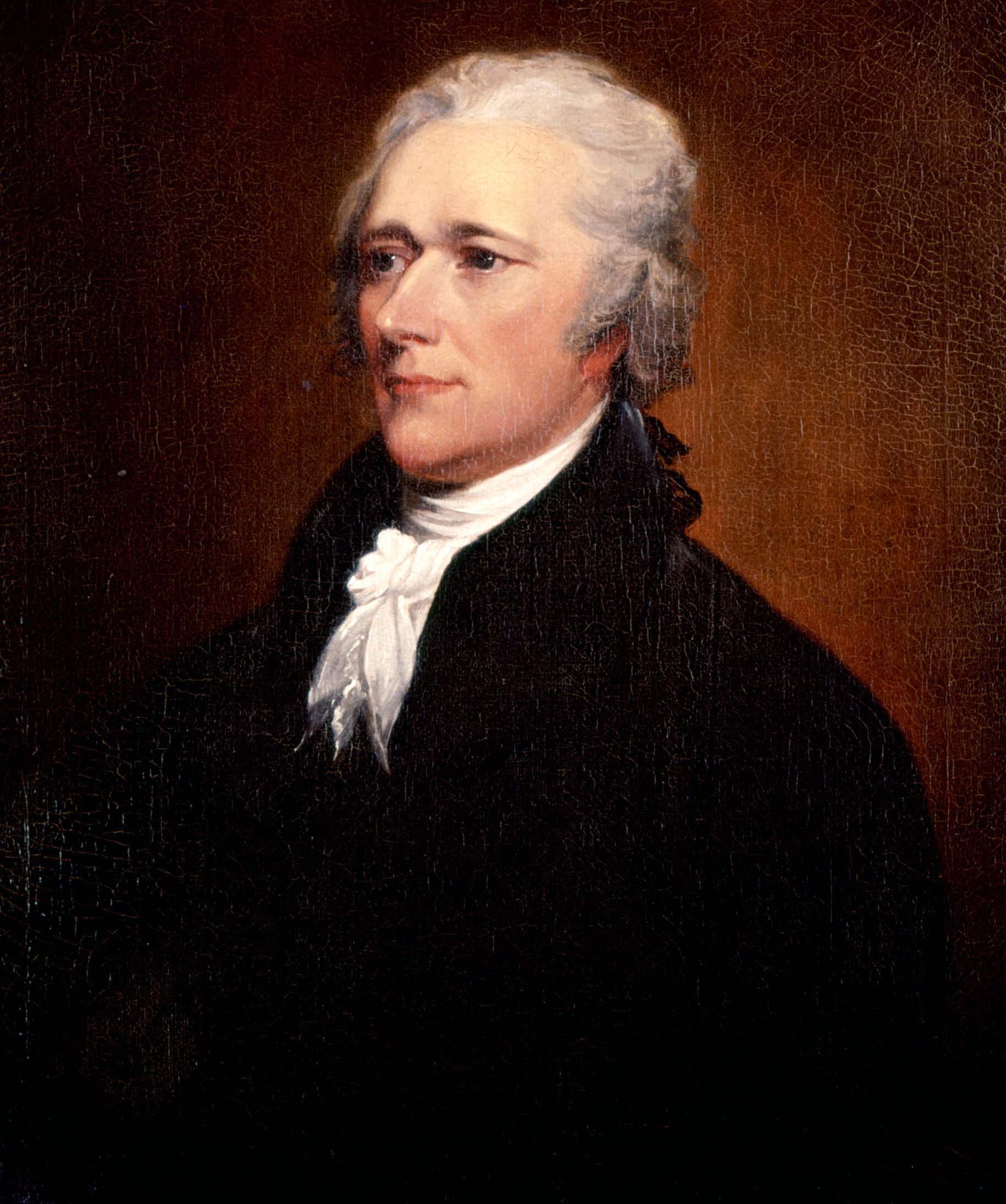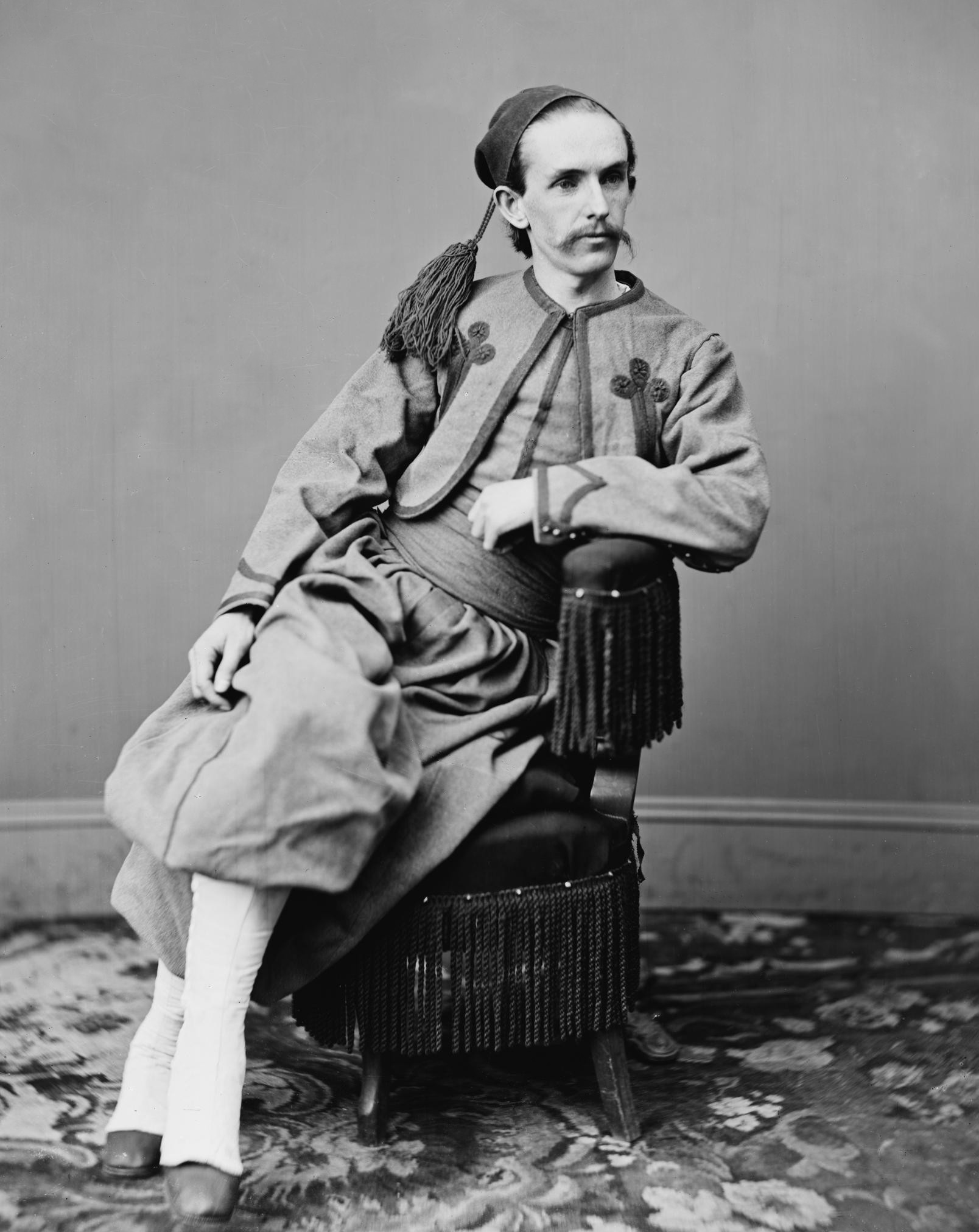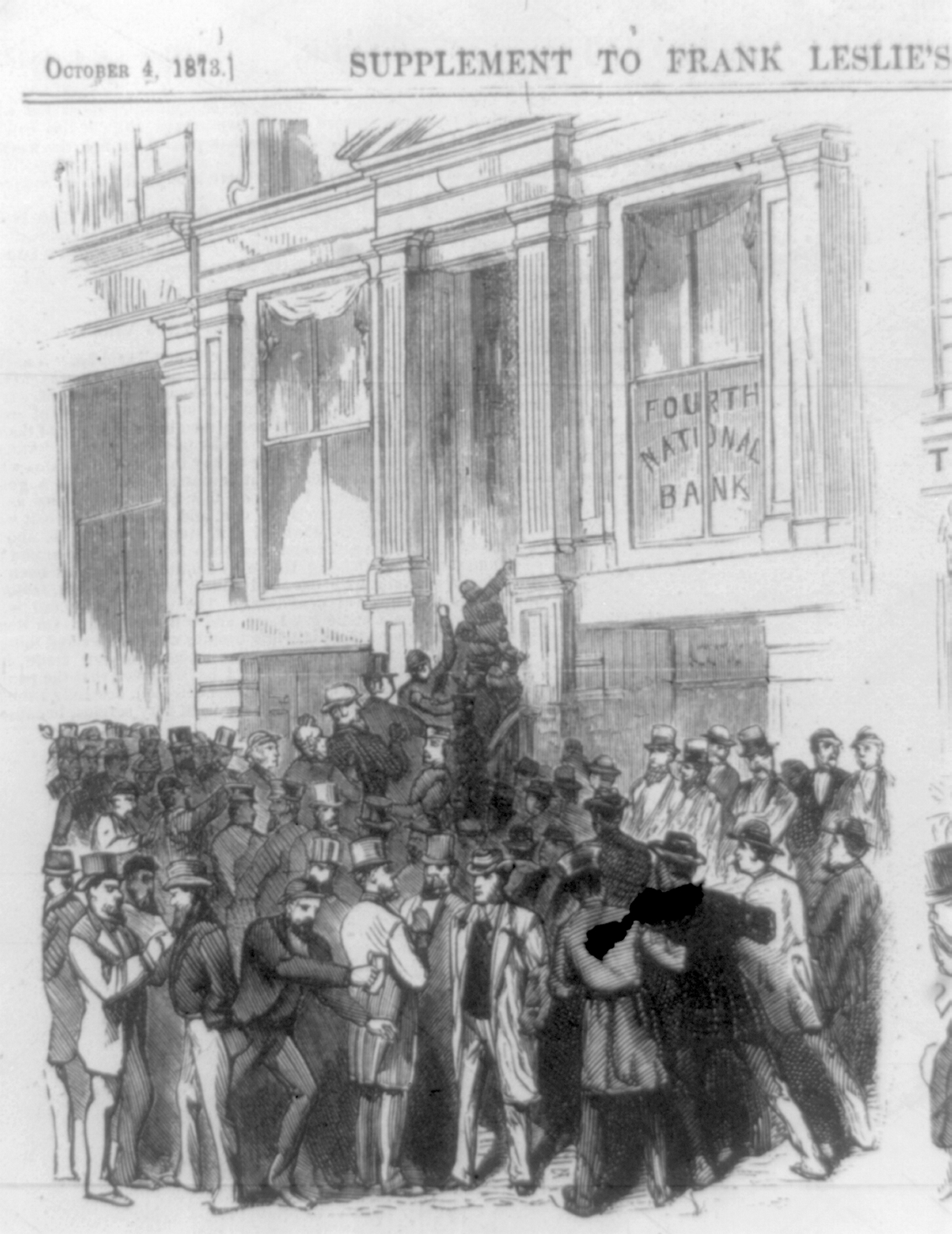|
Benjamin Bristow
Benjamin Helm Bristow (June 20, 1832 – June 22, 1896) was an American lawyer and politician who served as the 30th U.S. Treasury Secretary and the first Solicitor General. A Union military officer, Bristow was a Republican Party reformer and civil rights advocate. During his tenure as Secretary of Treasury, he is primarily known for breaking up and prosecuting the Whiskey Ring at the behest of President Grant, a corrupt tax evasion profiteering ring that depleted the national treasury. Additionally, Bristow promoted gold standard currency rather than paper money. Bristow was one of Grant's most popular Cabinet members among reformers. Bristow supported Grant's Resumption of Specie Act of 1875, that helped stabilize the economy during the Panic of 1873. As the United States' first solicitor general, Bristow aided President Ulysses S. Grant and Attorney General Amos T. Akerman's vigorous and thorough prosecution and destruction of the Ku Klux Klan in the Reconstructed South. ... [...More Info...] [...Related Items...] OR: [Wikipedia] [Google] [Baidu] |
United States Secretary Of The Treasury
The United States secretary of the treasury is the head of the United States Department of the Treasury, and is the chief financial officer of the federal government of the United States. The secretary of the treasury serves as the principal advisor to the president of the United States on all matters pertaining to economic and fiscal policy. The secretary is a statutory member of the Cabinet of the United States, and is fifth in the United States presidential line of succession, presidential line of succession. Under the Appointments Clause of the United States Constitution, the officeholder is nominated by the president of the United States, and, following a confirmation hearing before the United States Senate Committee on Finance, Senate Committee on Finance, is confirmed by the United States Senate. The United States Secretary of State, secretary of state, the secretary of the treasury, the United States Secretary of Defense, secretary of defense, and the United States Att ... [...More Info...] [...Related Items...] OR: [Wikipedia] [Google] [Baidu] |
Union Army
During the American Civil War, the Union Army, also known as the Federal Army and the Northern Army, referring to the United States Army, was the land force that fought to preserve the Union (American Civil War), Union of the collective U.S. state, states. It proved essential to the preservation of the United States as a working, viable republic. The Union Army was made up of the permanent Regular Army (United States), regular army of the United States, but further fortified, augmented, and strengthened by the many temporary units of dedicated United States Volunteers, volunteers, as well as including those who were drafted in to service as Conscription in the United States, conscripts. To this end, the Union Army fought and ultimately triumphed over the efforts of the Confederate States Army in the American Civil War. Over the course of the war, 2,128,948 men enlisted in the Union Army, including 178,895 United States Colored Troops, colored troops; 25% of the white men who s ... [...More Info...] [...Related Items...] OR: [Wikipedia] [Google] [Baidu] |
1876 United States Presidential Election
The 1876 United States presidential election was the 23rd quadrennial presidential election, held on Tuesday, November 7, 1876, in which Republican nominee Rutherford B. Hayes faced Democrat Samuel J. Tilden. It was one of the most contentious presidential elections in American history. Its resolution involved negotiations between the Republicans and Democrats, resulting in the Compromise of 1877, and on March 2, 1877, the counting of electoral votes by the House and Senate occurred, confirming Hayes as President. It was the second of five U.S. presidential elections in which the winner did not win a plurality of the national popular vote. This is the only time both major party nominees were incumbent US governors. After U.S. President Ulysses S. Grant declined to seek a third term despite previously being expected to do so, U.S. Representative James G. Blaine emerged as the frontrunner for the Republican nomination. However, Blaine was unable to win a majority at the 1876 ... [...More Info...] [...Related Items...] OR: [Wikipedia] [Google] [Baidu] |
Orville Babcock
Orville Elias Babcock (December 25, 1835 – June 2, 1884) was an American engineer and general in the Union Army during the Civil War. An aide to General Ulysses S. Grant during and after the war, he was President Grant's military private secretary at the White House, Superintendent of Buildings and Grounds for Washington D.C., and a Florida-based federal inspector of lighthouses. Babcock continued to serve as lighthouse inspector under Grant's successors Rutherford B. Hayes, James A. Garfield, and Chester A. Arthur. A native of Vermont, Babcock graduated third in his class at United States Military Academy at West Point, West Point in 1861, and served in the United States Army Corps of Engineers throughout the Civil War. As Assistant Engineer and aide-de-camp for district commander Nathaniel P. Banks, in 1862 Babcock worked on fortifications to aid in defending the nation's capital from Confederate attack. Babcock later served as aide-de-camp for Ulysses S. Grant and participate ... [...More Info...] [...Related Items...] OR: [Wikipedia] [Google] [Baidu] |
Edwards Pierrepont
Edwards Pierrepont (March 4, 1817 – March 6, 1892) was an American attorney, reformer, jurist, traveler, New York U.S. Attorney, U.S. Attorney General, U.S. Minister to England, and orator.''West's Encyclopedia of American Law'' (2005), "Pierrepont, Edwards" p. 445, vol. 2 Having graduated from Yale in 1837, Pierrepont studied law and was admitted to the bar in 1840. During the American Civil War, Pierrepont was a Democrat, although he supported President Abraham Lincoln. Pierrepont initially supported President Andrew Johnson's conservative Reconstruction efforts having opposed the Radical Republicans. In both 1868 and 1872, Pierrepont supported Ulysses S. Grant for president. For his support, President Grant appointed Pierrepont United States Attorney in 1869. In 1871, Pierrepont gained the reputation as a solid reformer, having joined New York's ''Committee of Seventy'' that shut down Boss Tweed's corrupt Tammany Hall. In 1872, Pierrepont modified his views on Reconstructio ... [...More Info...] [...Related Items...] OR: [Wikipedia] [Google] [Baidu] |
Louisville, Kentucky
Louisville ( , , ) is the largest city in the Commonwealth of Kentucky and the 28th most-populous city in the United States. Louisville is the historical seat and, since 2003, the nominal seat of Jefferson County, on the Indiana border. Named after King Louis XVI of France, Louisville was founded in 1778 by George Rogers Clark, making it one of the oldest cities west of the Appalachians. With nearby Falls of the Ohio as the only major obstruction to river traffic between the upper Ohio River and the Gulf of Mexico, the settlement first grew as a portage site. It was the founding city of the Louisville and Nashville Railroad, which grew into a system across 13 states. Today, the city is known as the home of boxer Muhammad Ali, the Kentucky Derby, Kentucky Fried Chicken, the University of Louisville and its Cardinals, Louisville Slugger baseball bats, and three of Kentucky's six ''Fortune'' 500 companies: Humana, Kindred Healthcare, and Yum! Brands. Muhamm ... [...More Info...] [...Related Items...] OR: [Wikipedia] [Google] [Baidu] |
Reconstruction Era Of The United States
The Reconstruction era was a period in History of the United States, American history following the American Civil War (1861–1865) and lasting until approximately the Compromise of 1877. During Reconstruction, attempts were made to rebuild the country after the bloody Civil War, bring the former Confederate States of America, Confederate states back into the United States, and to redress the political, social, and economic legacies of slavery. During the era, United States Congress, Congress Abolitionism in the United States, abolished slavery, ended the remnants of Secession in the United States, Confederate secession in the Southern United States, South, and passed the Thirteenth Amendment to the United States Constitution, 13th, Fourteenth Amendment to the United States Constitution, 14th, and Fifteenth Amendment to the United States Constitution, 15th Amendments to the Constitution (the Reconstruction Amendments) ostensibly guaranteeing the newly freed slaves (Freedma ... [...More Info...] [...Related Items...] OR: [Wikipedia] [Google] [Baidu] |
Ku Klux Klan
The Ku Klux Klan (), commonly shortened to the KKK or the Klan, is an American white supremacist, right-wing terrorist, and hate group whose primary targets are African Americans, Jews, Latinos, Asian Americans, Native Americans, and Catholics, as well as immigrants, leftists, homosexuals, Muslims,and abortion providers The Klan has existed in three distinct eras. Each has advocated extremist reactionary positions such as white nationalism, anti-immigration and—especially in later iterations—Nordicism, antisemitism, anti-Catholicism, Prohibition, right-wing populism, anti-communism, homophobia, Islamophobia, and anti-progressivism. The first Klan used terrorism—both physical assault and murder—against politically active Black people and their allies in the Southern United States in the late 1860s. The third Klan used murders and bombings from the late 1940s to the early 1960s to achieve its aims. All three movements have called for the "purification" of Ame ... [...More Info...] [...Related Items...] OR: [Wikipedia] [Google] [Baidu] |
Amos T
Amos or AMOS may refer to: Arts and entertainment * Amos Records, an independent record label established in Los Angeles, California, in 1968 * Amos (band), an American Christian rock band * ''Amos'' (album), an album by Michael Ray * ''Amos'' (film), a 1985 American made-for-television drama film People and religious figures * Amos (name), a given name, nickname and surname Technology * AMOS or Advanced Mortar System, a 120 mm automatic twin barreled, breech loaded mortar turret * AMOS (programming language), a dialect of BASIC on the Amiga computer * Alpha Micro Operating System, a proprietary operating system used in Alpha Microsystems minicomputers * AMOS (statistical software package), a statistical software package used in structural equation modeling * Air Force Maui Optical and Supercomputing observatory, an Air Force Research Laboratory operating on Maui, Hawaii * Amos (satellite), series of Israeli IAI-built civilian communications satellites ** AMOS (sate ... [...More Info...] [...Related Items...] OR: [Wikipedia] [Google] [Baidu] |
Panic Of 1873
The Panic of 1873 was a financial crisis that triggered an economic depression in Europe and North America that lasted from 1873 to 1877 or 1879 in France and in Britain. In Britain, the Panic started two decades of stagnation known as the "Long Depression" that weakened the country's economic leadership. In the United States, the Panic was known as the "Great Depression" until the events of 1929 and the early 1930s set a new standard. The Panic of 1873 and the subsequent depression had several underlying causes for which economic historians debate the relative importance. American inflation, rampant speculative investments (overwhelmingly in railroads), the demonetization of silver in Germany and the United States, ripples from economic dislocation in Europe resulting from the Franco-Prussian War (1870–1871), and major property losses in the Great Chicago Fire (1871) and the Great Boston Fire (1872) helped to place massive strain on bank reserves, which, in New York City ... [...More Info...] [...Related Items...] OR: [Wikipedia] [Google] [Baidu] |
Specie Payment Resumption Act
The Specie Payment Resumption Act of January 14, 1875 was a law in the United States that restored the nation to the gold standard through the redemption of previously-unbacked United States Notes and reversed inflationary government policies promoted directly after the American Civil War. The decision further contracted the nation's money supply and was seen by critics as an exacerbating factor of the so-called Long Depression, which struck in 1873. History Late in 1861, seeking to raise revenue for the American Civil War effort without exhausting its reserves of gold and silver, the United States federal government suspended specie payments, or the payments made in gold and silver in redemption of currency notes. Early in 1862, the United States issued legal-tender notes, called greenbacks. By war's end, a total of million in greenbacks had been issued, and authorization had been given for another million in small denominations, known as fractional currency or "shin plasters." T ... [...More Info...] [...Related Items...] OR: [Wikipedia] [Google] [Baidu] |
Paper Money
A banknote—also called a bill (North American English), paper money, or simply a note—is a type of negotiable promissory note, made by a bank or other licensed authority, payable to the bearer on demand. Banknotes were originally issued by commercial banks, which were legally required to redeem the notes for legal tender (usually gold or silver coin) when presented to the chief cashier of the originating bank. These commercial banknotes only traded at face value in the market served by the issuing bank. Commercial banknotes have primarily been replaced by national banknotes issued by central banks or monetary authorities. National banknotes are often – but not always – legal tender, meaning that courts of law are required to recognize them as satisfactory payment of money debts. Historically, banks sought to ensure that they could always pay customers in coins when they presented banknotes for payment. This practice of "backing" notes with something of substance is ... [...More Info...] [...Related Items...] OR: [Wikipedia] [Google] [Baidu] |



.jpg)



